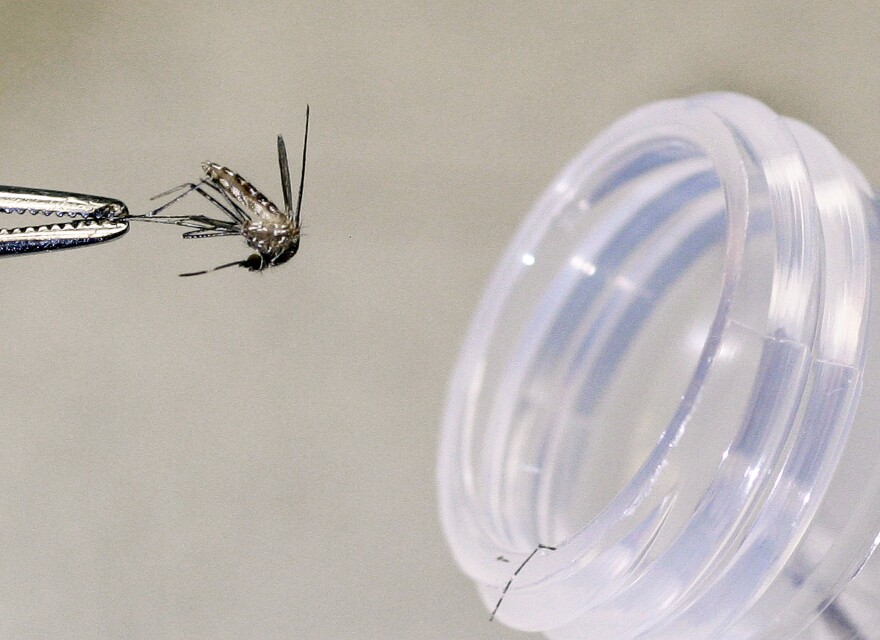With our free press under threat and federal funding for public media gone, your support matters more than ever. Help keep the LAist newsroom strong, become a monthly member or increase your support today.
Does Our Wet Season Mean We’ll See More Cases Of West Nile Virus?

West Nile virus first became a concern in Los Angeles County back in 2004, with the number of cases ranging widely each year from just a few to several hundred. Spread via mosquito, it can be deadly.
While the invasive, ankle biting Aedes aegypti mosquito has been stealing the headlines and our sanity the past few years, it’s the Culex tarsalis mosquito that’s responsible for the spread of West Nile.
Given that mosquito season runs from about June to November, we were wondering if our ultra wet year will mean more mosquitoes and more cases of West Nile.
More mosquitoes this year?
Surprisingly, we’ve actually seen 84% fewer mosquitoes across the Greater Los Angeles Vector Control District this April than we did last April, as a result of our cooler night time temperatures.
While populations of Culex tarsalis are starting to pick up as things warm, an apocalyptic mosquito season isn’t guaranteed.
“I don’t want to say in any uncertain terms there will be, but with the rains it definitely has increased the number of backyard sources we’ve seen in a normal year,” said Steve Vetrone, director of scientific-technical services with Greater Los Angeles Vector Control District.
Breeding grounds
Stagnant water in empty buckets and bird baths make perfect mosquito breeding grounds, but the bigger problem is unmaintained backyard swimming pools, of which there are about 5,000 within Vetrone’s area.
Tons of rain can actually help lower mosquito populations in some spots like storm drains, where organic matter tends to gather, hold on to moisture and become a perfect home for mosquitoes to reproduce. During a wet year, those sources tend to get flushed out.
This year, the vector control district has sent off one collection of mosquitoes for West Nile testing and have yet to see a positive.
“At least with West Nile virus, transmission really depends on what the immune status of bird populations is,” said Vetrone.
That’s because mosquitoes often pick up the virus from infected birds and then spread it to humans.
More West Nile?
“It’s hard to predict,” said Aiman Halai, medical epidemiologist with the L.A. County Department of Public Health.
“There’s all these multiple factors that are playing a part. Is there an increase in mosquitoes? Is there more standing water? Is the weather hot and humid? Are the birds carrying more virus?” Halai said.
Remove one part of that puzzle and we might see fewer cases than in previous years.
“We’ve found counterintuitively, places with more rainfall actually had less disease cases in humans,” said Ryan Harrigan, a biologist at UCLA who studies vector borne diseases.
There are different hypotheses as to why that can be the case. One idea is that when there’s low rainfall, it's possible that mosquitoes and birds congregate at the limited sources of water available.
“Both birds and mosquitoes need to go there every once in a while. Birds to drink and mosquitoes to lay their eggs. You get this sort of meeting spot where the disease transmission cycle can sort of take off,” said Harrigan.
Regardless of West Nile, you should be doing your part to eliminate sources of standing water. Something that we talk about over here.








